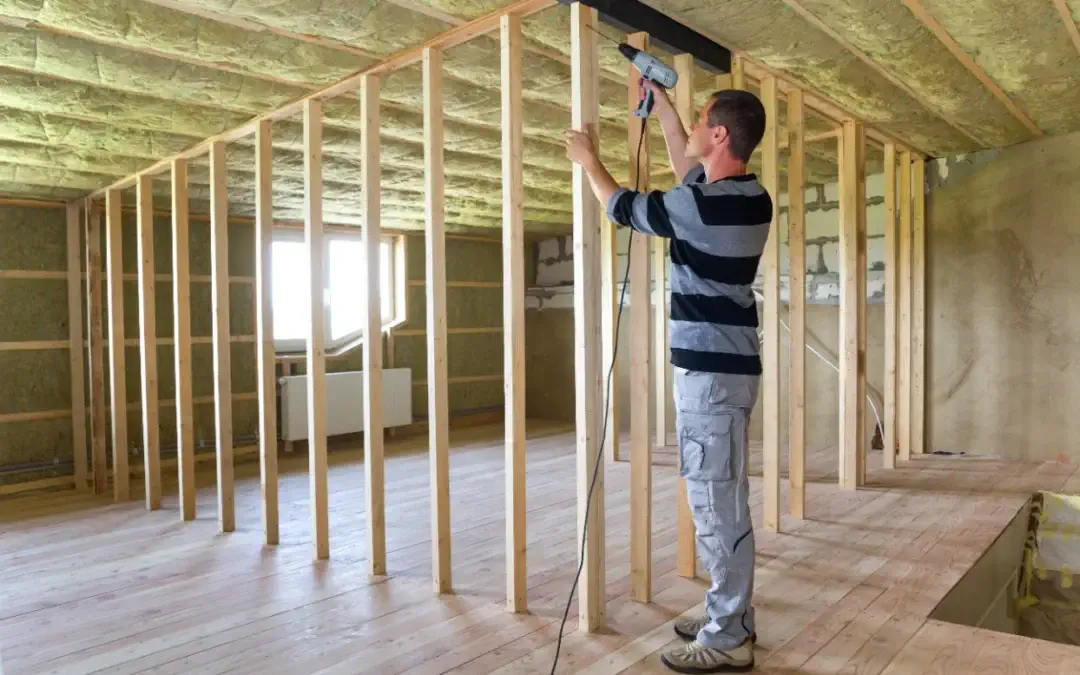How Do You Know What a Load-Bearing Wall Is?
When it comes to home renovations or remodeling, understanding the role of load-bearing walls is crucial. These walls aren’t just partitions—they’re the backbone of your home’s structural integrity. Removing or altering a load-bearing wall without proper precautions can lead to disastrous consequences, including compromised stability and potential safety hazards.
But, how do you know what a load-bearing wall is? This blog is your guide to identifying load-bearing walls, understanding their importance, and ensuring any modifications are done safely and professionally.
Need Help Building or Reinforcing a Wall in Long Island? Call Zavza Seal at (631) 980-1800 for a Free Quote!
What Is a Load-Bearing Wall?
A load-bearing wall is a vital part of your home’s structure, responsible for supporting the weight of elements above it—such as floors, ceilings, and the roof—and transferring that weight down to the foundation. These walls ensure the stability of your home and play a key role in preventing structural failure.
Unlike non-load-bearing walls, which are designed solely as dividers or aesthetic features, load-bearing walls carry significant loads and should never be removed or modified without proper reinforcement.
How Can You Identify a Load-Bearing Wall?
Determining whether a wall is load-bearing can seem confusing, but there are several steps that can help you make an informed judgment:
- Check the Blueprint or Building Plans: The easiest way to identify load-bearing walls is by reviewing your home’s original blueprints or building plans. These documents often mark structural walls and their role in supporting your home.
- Observe Wall Positioning: Load-bearing walls are typically located beneath structural beams or floor joists. They often run perpendicular to joists and are commonly found in central areas of the home where load distribution is most critical.
- Inspect Exterior Walls: Most exterior walls are load-bearing by default, as they support the edges of your roof and distribute the load to the foundation.
- Consult a Professional: If you’re unsure, it’s always best to seek advice from a structural engineer or experienced contractor. They can assess your home’s layout and provide definitive answers.
Common Misconceptions
Not every wall inside a home is load-bearing, nor are all exterior walls necessarily structural. Factors like home design, construction era, and remodeling history can create exceptions. Always rely on professional evaluations when in doubt.
Knowing how to identify load-bearing walls can save you from costly mistakes and ensure that any changes to your home’s structure are safe and compliant with building codes. Let me know if you’d like me to expand further or adjust the draft!
What Happens if a Load-Bearing Wall is Removed?
Removing a load-bearing wall without proper precautions can lead to dire consequences for your home’s structure and safety. These walls are designed to support and distribute weight evenly, so their absence creates significant risks:
- Structural Consequences:
- Risk of Collapse: The immediate effect of removing a load-bearing wall can be a partial or complete collapse of the structure it supports.
- Uneven Load Distribution: Without the wall, the weight of the home can shift improperly, leading to cracking, sagging floors, or damage to other walls and ceilings.
- Legal and Safety Implications:
- Building Code Violations: Removing or modifying a load-bearing wall without adhering to local building codes can result in fines and legal complications.
- Safety Concerns: Improperly altered structures can pose long-term safety risks to occupants.
Engaging a professional contractor or structural engineer is advisable before removing or altering load-bearing walls. Their expertise ensures the structural stability of your home is maintained.
Can Load-Bearing Walls Be Modified or Removed Safely?
Yes, load-bearing walls can be modified or removed safely, but the process requires meticulous planning and the installation of alternative support systems to redistribute the load.
Here’s how professionals typically approach the task:
- Installing Support Systems: Before removing the wall, temporary supports such as shoring beams or columns are used to hold up the weight. Permanent reinforcements, like steel or laminated beams, are then installed to take over the load-bearing function.
- Reinforcement Techniques: In cases where modifications rather than full removal are required, techniques like installing new headers or vertical reinforcements can ensure the structure remains stable.
- The Role of Licensed Professionals: Attempting DIY changes to load-bearing walls is highly discouraged. Licensed contractors and structural engineers are equipped with the knowledge and tools to manage the process safely and in compliance with building regulations.
How Do You Know What a Load-Bearing Wall Is: Final Thoughts
Load-bearing walls are the backbone of your home’s structural integrity, and understanding their role is critical for any renovation or remodeling project. From identifying these walls to modifying them safely, the key takeaway is clear—never take risks with your home’s stability.
With over 20 years of experience in constructing, repairing, and reinforcing basement, foundation and retaining walls, Zavza Seal has earned a 5-star reputation on Google My Business (GMB) and Better Business Bureau (BBB). Trust our team to provide unparalleled expertise and exceptional service.
Call on Zavza Seal for Expert Wall Repair and Reinforcement in Long Island, Brooklyn, Queens, or The Bronx! Call (631)980-1800 to Schedule Your Free Assessment!
Frequently Asked Questions (FAQs)
Can all homes have load-bearing walls?
Yes, most homes have load-bearing walls, although the number and placement vary based on the structure’s design and size.
Are load-bearing walls only found in older homes?
No, load-bearing walls are common in both older and modern homes. However, the materials and construction methods may differ based on the home’s age.
How much does it cost to modify a load-bearing wall?
Costs vary widely depending on the scope of the project, the materials required (e.g., steel beams), and the region. On average, projects can range from a few thousand to tens of thousands of dollars.








